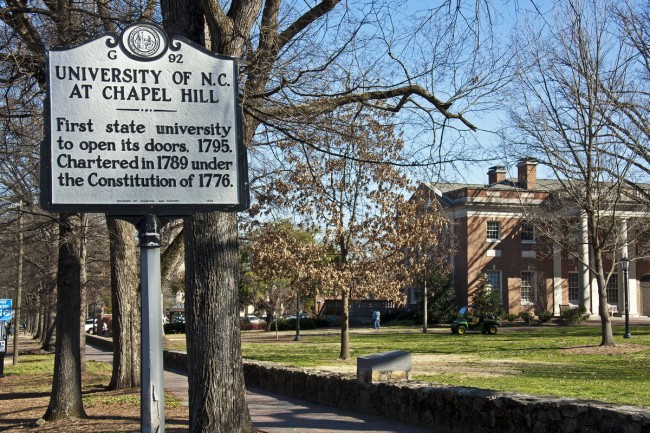A new report from the U.S. Census Bureau sheds light on a question many local leaders have been asking for a long time- how do college students affect town and county poverty rates?
Rebecca Tippett is the Director of Carolina Demography at UNC’s Carolina Population Center. She says off-campus students significantly inflate local poverty rates.
“In Chapel Hill the poverty rate cuts in half when you exclude them from the population, because the poverty rate among those students is so high, largely just because they’re in school full-time and might not need to be working,” says Tippett.
When off-campus students are not counted, Chapel Hill’s poverty rate falls from 23.7 percent to 11.5 percent. At the county level, the rate drops from 18.8 percent to 14 percent.
The report used data from the 2009-2011 American Community Survey. It examined three groups of students, those living in dorms, those living with family members, and those living off-campus.
Students living in dorms, who account for 11 percent of the total student population nationwide, are never counted in the poverty rate.
Students living with family members account for 63 percent of the total. They are always included in poverty measures, as are the 25 percent of students living off-campus.
The report shows excluding the off-campus population has little impact on state poverty rates, but can make a big difference at the local level.
When it comes to estimating the need for social support services, government officials usually assume students are only temporarily living below the poverty line while they are in school full-time.
But Tippett says that’s not always the case. She warns against excluding the student population from discussions of poverty all together.
“I do have some concerns about wanting to remove students from the impoverished population entirely,” says Tippett. “I think it many cases, particularly when you’re having conversations about the increasing challenge of student debt and the current job market, we do want to keep in mind that just because people are in school they don’t all have parental support. They might be trying to work full time and can’t make it. I think there are important nuances to this to keep in mind.”
Tippett says this is an area where local governments should coordinate with schools and institutions to make sure student needs are met.
“Just because people are students, doesn’t mean they don’t have needs that are not being met by their work and loan packages,” says Tippett. “I think this is a very tricky population and what it points to is the need to coordinate local government and school interaction to address this, to better understand what the student population is; who they are; what their needs are; how that might impact and interplay with the local government.”
You can read the full report here.






Comments on Chapelboro are moderated according to our Community Guidelines